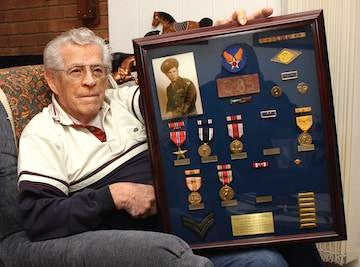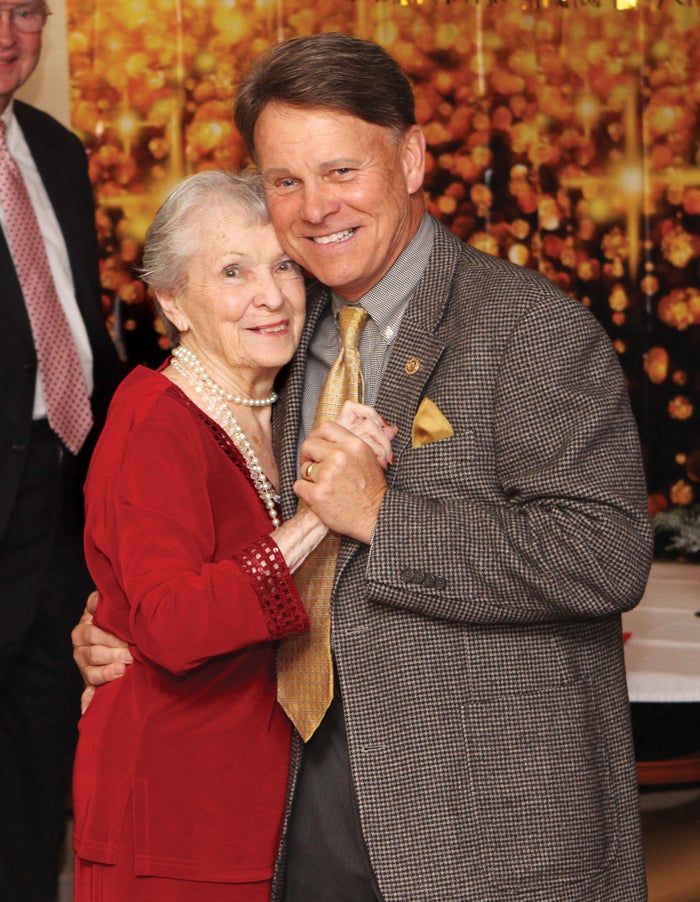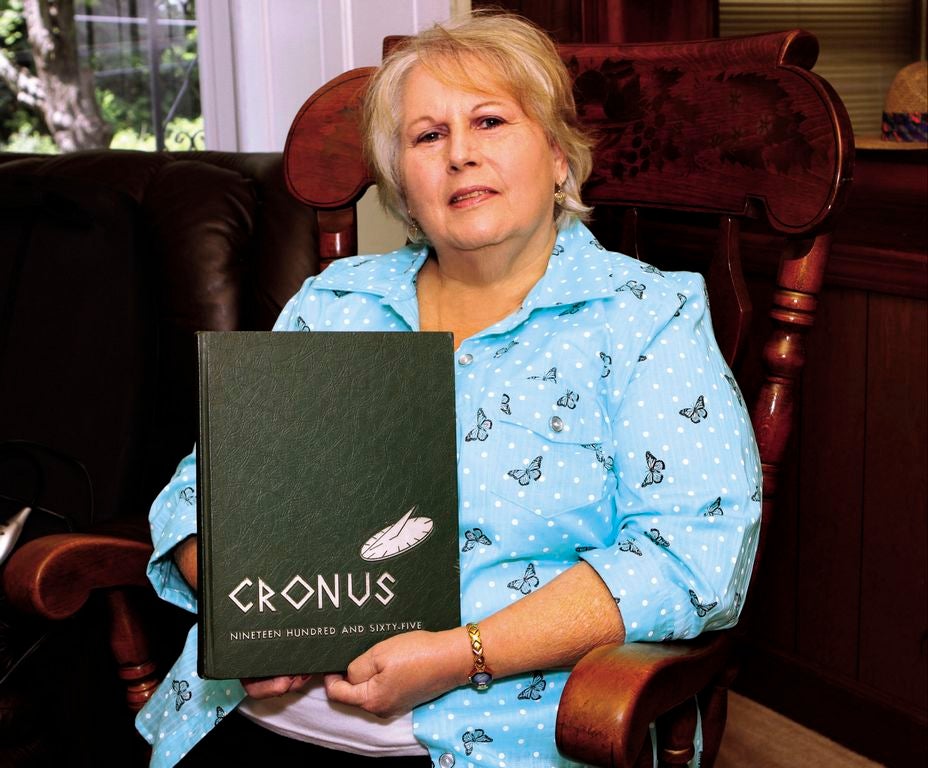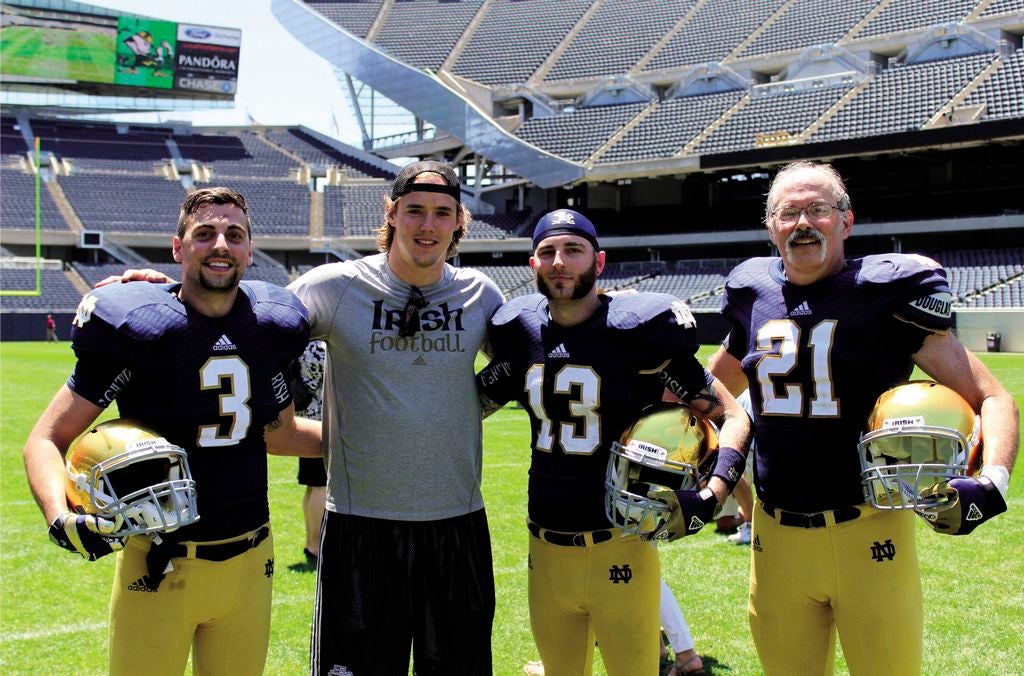Bataan Death March survivor
Published 12:00 am Thursday, February 20, 2014
It happened at this time of year — way back in 1942 on the Philippine islands that had been something of a paradise until Dec. 7 a couple months earlier.
Japan planes had destroyed almost the entire Pacific fleet of American ships at Pearl Harbor. The U.S. force in the Philippines was cut off with no chance of rescue. The military hunkered down on Bataan for a last stand against the Japanese army that was sweeping across the Pacific islands.
In that American unit was James D. Beshears of Clemmons. He’s 94 now, but his memories of the assault on Bataan are as sharp as ever, and his health remains good.
“If the weather was good, I would be on the golf course,” he said last week.
Stories from Bataan, the infamous Death March, are so incredible, so horrible, some people have trouble believing anyone could have been so brutal.
Beshears is one of the rapidly dwindling number of American survivors and witnesses still alive to recall.
The Courier interviewed Beshears last in 2002
This reporter called his son first, not sure his dad would still be living. Indeed, he is.
But there was a time in 1942 that he was sure death would visit at any moment as the troops weathered the Japanese assault before food and ammunition ran out.
“Guys were dying so fast you couldn’t keep them buried,” he said.
If the battle was bad, life as a prisoner of war was worse.
Here is our story from 2002:
For the past 50 years, life has been almost normal for James D. Beshears.
There was a time when the rain cloud of life seemed to hover over his head.
Beshears, 83, (now 94) might be classified as either the unluckiest — or the luckiest — man in Clemmons.
Despite repeated brushes with death, he has survived.
He spent World War II in the pit of hell — an American soldier herded on the infamous Bataan Death March and locked in Japanese prison camps.
The Japanese hit Pearl Harbor on Sunday. The next day, they invaded the Philippines, where an American force found itself cut off, with no hope for reinforcements, relief or supplies. Their heroic stand, eventual surrender and brutal treatment by their captors became a sad footnote of the war.
“It’s kind of hard to talk about it sometimes,” Beshears said. “I could tell you things that would go in one ear and out the other. People can’t believe that. The human body is a tough machine when it has to be.
“My thought was I don’t want to die over here, and I didn’t. Some of them, you might say, would give up. What’s the use? I don’t know what egged me on. I went through the same treatment most of them did. A lot of them didn’t survive. I kept going.”
He’s in relatively good health and still enjoys an occasional game of golf.
He was born in the Hanestown community. His family eventually moved to Davie County to farm. His father died of pneumonia. Five months later, his mother died.
The surviving children were split. The youngest three went to live in the Barium Springs Orphanage in Iredell County.
Contrary to many images of orphanage life, Beshears said he loved it there.
“That was a good place — a good place for kids that don’t have parents. We had our own support system. We grew everything we ate. We had our own sports programs. There were 360 kids there at that time. It was a good place — not like you see in the movies. It was a beautiful place. I cried when I went there and cried when I left.” He was there 10 years.
Rather than being drafted into the infantry, he joined the Army Air Corps with another orphanage friend, Ben Morrow, after leaving the orphanage.
Both of them were packed off together to the tropical paradise of the South Seas close to Manila. He worked in munitions.
“I was just there 18 days when the war started,” he said.
The Japanese had figured to overrun the Americans at Bataan and Corrigidor in a couple of weeks. They encountered heroic resistance. The American forces held out for four months — embarrassing the Japanese army’s bid to seize the entire Pacific. The general leading the forces committed suicide because of the failure.
“He got stuck with us and killed himself,” Beshears said.
But the resistance became futile.
“We ran out of ammunition and food. We were getting less than a third ration a day. Our orders were don’t surrender. But (Major Gen. Edward P.) King knew our circumstances. He was there. He surrendered Bataan. I’m glad we surrendered. I was tired. Even at 22 years old, if you don’t get to take your shoes off once a week, to take a bath only when you jump in the ocean —when you don’t get to rest any — you get tired and hungry.”
Mosquitoes were as relentless as the Japanese. Beshears had contracted malaria. It was his job to shuttle bombs and munitions from place to place.
“For about a month, we kept our bombs moving back and forth, hoping for reinforcements. We hauled ammunition to the front lines.”
The Japanese were as close as a 100 yards at the end.
“We had been assigned a task that was impossible to do. We were supposed to hold that line until dawn,” Beshears recalled.
The Americans surrendered.
“Most of them were ready,” Beshears said. “After four months of no relief, very little food, everybody was tired. It was just about like the Alamo. The Japanese were right across the creek.”
But surrender was only the beginning of their problem. The Japanese were ruthless captors.
In brutal tropical heat, the American and Filipino captives were forced on the gruesome 80-mile trek now remembered appropriately as the Bataan Death March.
To stumble and fall meant death. Victims were often beheaded. There was no water or food. And the Japanese were in no hurry. It took more than a week to make the march.
“I was in one open field for three days,” Beshears said. “Some say it was 60 miles, some say 80 miles. I don’t really know. But it wasn’t all at one time. It would have probably been better if it was, rather than keeping us there in the hot sun those days. You took a chance on water. Some of it, you knew, was contaminated. Some of the troops died right on the side of the road. It’s hard to describe.”
He had to keep his wits about him.
“After we had surrendered, I had a spell of Dinky Fever. I had a chill every day at lunch time,” Beshears recalled. His friend from the orphanage was in even worse shape. Beshears helped support him on the march to keep him from falling.
If their captors didn’t kill them, contaminated water would. That caused many of the deaths. Beshears risked dehydration rather than drink dirty water.
He did encounter a rare glimpse of compassion from one captor.
“On that march, all the food I was issued was one bowl of rice. But a Japanese soldier gave me a can of sardines I was helping my buddy along. We stopped in a little barrio, a village. The Japanese soldier asked me if I was thirsty. I said I was hungry. He got me a can of sardines and told me to put it in my pocket and not to tell anybody where I got it. Me and my buddy ate that.”
They marched to an awaiting train. They were stuffed into freight cars.
“It was so crowded. They would put you in and close the door. You almost died because it was so crowded you couldn’t fall. We got out and marched to Camp O’Donnell. Most of them died there.”
Including his friend, Ben Morrow, in May 1942.
“He made the march, but he didn’t live much after that. He had diarrhea and dysentery.
“I wasn’t with him.
“Every chance I got out of there and went on (work) detail. The Japanese would take us back to salvage anything we could get — bombs, fixed bridges. I got out of there every chance I got. It was filthy. Any where was better than there.”
He also worked on the burial detail, and there were hundreds to bury. Four, five and six bodies were thrown in a grave at a time.
“They were dying like flies. The Filipinos got hold of some contaminated water. That’s what killed a lot of them. They carried them out long lines at a time.
“I wasn’t in the Philippines the whole time. They moved me to Manchuria. I left the Philippines in October 1942 on a Japanese ship with 2,000 prisoners. Went from Manila to Manchuria, a thousand in each hatch in a hole that carried freight. We could come up every once in a while. We were fired at by a torpedo. We stopped at Formosa and got to Manchuria in November 1942.”
There he worked in a textile plant making canvas for the Japanese war machine.
If he sweltered in the heat of the Philippines, he shivered in the cold of Manchuria. “That was going from one extreme to another in temperature. Manchuria was 40 below.”
One of the punishments was depriving prisoners of blankets at night.
Beshears once was caught smuggling notes from one prisoner to another.
He was slapped repeatedly until he confessed. Then he was told to stand at attention for four hours until he asked for a bathroom break.
“When I got ready to move, I couldn’t. I was paralyzed I had been standing there so stiff.”
For the next 21 days, he was given food every third day and a blanket at night every third day.
“It was so cold. I couldn’t sleep without my cover so I would walk to keep warm. I finally made my 21 days. I had to stand there 14 hours a day.”
“It takes a determination, I guess that’s what you’d call it, to tolerate such as that.”
He recalls the camp’s steady diet of mush.
“We did get three meals a day, if you call them meals. You ever eat mush? Corn meal. We had soybeans and maize. I had never heard of maize until I got over there. It looked like broom corn seeds, little old seeds cooked into kind of a mush. No meat. It was kind of risky for a dog to come into camp.”
The camp was liberated Aug. 15, 1945.
He weighed about a hundred pounds then. In high school, he had weighed 125.
“The Russians got the credit for liberating us. But three or four days before the Russians came in there were six people — four stateside Yanks, one Japanese and one Chinese that bailed out of a plane and landed a half mile from our camp. They parachuted out and had their radio equipment and everything. They were surrounded when they hit the ground. It’s surprising they weren’t shot. They had to tell the Japs the war was over.
“They brought their radio equipment and set it up in our camp and contacted the 7th Fleet down in the China Sea.
“The planes came in and dropped some food and clothing to us. We were on our way home. I didn’t get out of the camp until September 8 and headed down to the China Sea to Korea, got on a boat and went into Okinawa. At that time, they said a typhoon was coming in, and they made us go back to sea. There were too many ships in port to have us in there. We went back to sea a hundred miles. They typhoon came in, and while we were out there a mine hit the ship and killed some of the ship’s crew and two or three guys who had been with me all the time. The ship was pitching. The front end would go in the water and then the back end.”
The waves were as tall as telephone poles, he said. The ship would climb the wave and then fall into the trough. Over and over. The ship was dead in the water.
Were they to survive the death march and three years in prisons only to die at sea?
“A ship circled us for three days. It finally got close enough to shoot a line to us and tow us in. The engine was out. I don’t know how he steered the ship.”
The ship finally made it to Okinawa. It had taken on so much water that it wasn’t safe to go into port.
“We had to go over the side in a net and get in a barge.”
“Then I got on a plane at Okinawa. When we landed in Manila a tire blew out on the plane. He just did get it stopped before we ran off the runway.”
Finally, he boarded a ship for home.
“My brother that was in the Navy was stationed in Oakland, Calif. He was keeping track of me. I was supposed to go into San Francisco. They notified him we would be going to Seattle, instead. They took us to the hospital. I was in there a couple days and looked around. My brother came in …”
Beshears still chokes with emotion at the memory.
“He had hitchhiked from California to Seattle, Washington … He spent the night with me, and then I came across the states on a hospital train. They sent me to Asheville.”
He recovered at the Veterans Hospital at Oteen before he was discharged three months later in March 1946.
He was a prisoner of war for three years and four months.
He came home to his family of brothers and sisters, now living in Winston-Salem.
“They received me good — crying and all that stuff.”
He worked as a plumber at first, then joining Western Electric, where he worked for 28 years.
He lives in Clemmons. He has a son, James Dickson Beshears III.
A movie was made once about Bataan.
“I’ve seen the movie,” he said. But Hollywood couldn’t recreate the cruelty and torture that Bataan actually saw. “They couldn’t put that in there. People wouldn’t believe it, anyway. A human body can stand a bunch when it has too. It’s a tough piece of machinery.”
Historians say about 11,000 American troops surrendered at Bataan. An estimated 600 to 650 died on the march. Another 1,500 died at Camp O’Donnell. Filipino losses were even more severe. An estimated 25,000 Filipino soldiers died at the camp.





